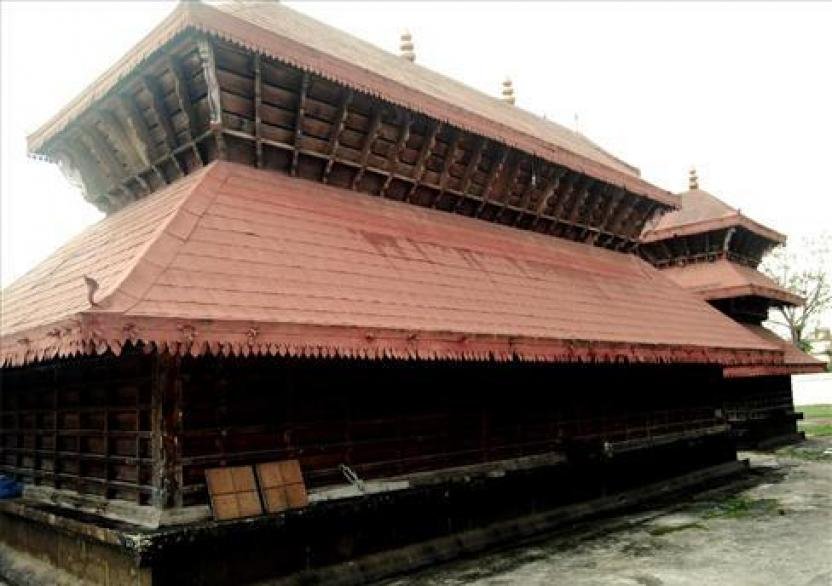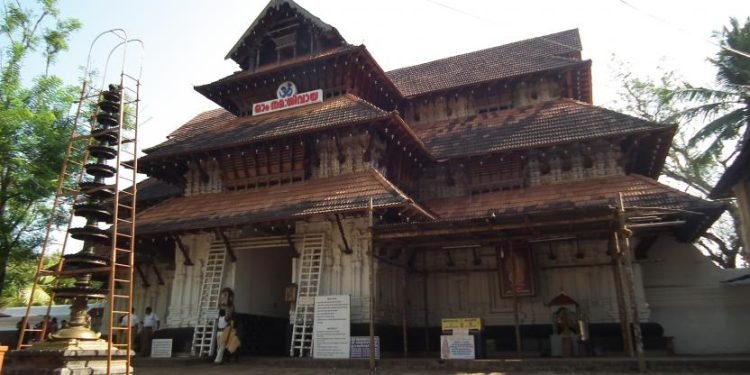This place is famous for its Sita Devi temple which is one of the few in India, devoted for Sita Devi. The icons of Lava and Kusa, children of Sita, are also installed here. It is believed that Sita Devi went into earth here.
Shrine’s History
This place and the surrounding areas are believed to be the key places in the Hindu epic Ramayana. The temple festival which is celebrated annually in the month of January is famous and it attracts people from various parts of Wayanad. The famous “kuruva island” is 5 km away from pulpally town. The temple is closely dedicated to Goddess Sita and their sons Lava and Kusa. The temple was constructed during the period of the great warrior Kerala Varma Pazhassi Raja .The temple pond is one of the largest in the Wayanad. During the military assault, Tippu sulthan of Mysore planned to destroy this temple. It is believed that he had to retreat, as when he attacked the temple, darkness had been created at the noon by the supreme power of Goddess Sita.
Another important thing about the temple is that Wayanad is famous for the leeches but the surroundings of the temple have no leeches. It is believed that Goddess Seetha cursed the leeches that bit Lava and Kusa. Another significant thing about this place is that a large number of termite mounds can be seen at different spots. The festival of this temple celebrated in the first week of January, is considered to be the regional festival attended by a large number of people belonging to different castes and creed. The temple was constructed by Shri Pazhassiraja in the 18th century. He managed the temple for many years. The meetings and discussions with his army chieftains were held in the courtyard of this temple. Later, the management of this temple came into the hands of Kuppathode family- the powerful and renowned Nair family in Wayanad.
In olden times, most of the important temples in Wayanad were managed by different Nair families. The Moopil Nair (the chief)of Kuppathod family stayed at nellarattedom, the headquarters of the family. Even now, a member of this family is designated as the trustee for the management of the temple. The renovation of the temple was done during the period of 1985-1995
.jpg)

Architectural Relevance of This Shrine
The Lava kusa seetha temple Architecture is unique and Kerala style of Architecture.The temple is built on the attitude of 700 ? 2100 m Above Sea Level.It is believed that when Sita was abandoned by Rama, she reached Pulpally and was given shelter by the great Sage Valmiki. The place in Pulpally, where Sita gave birth to Lava and Kusa is called Valmiki Ashramam.There is a big rock in the down valley and people believe that Valmeeki Maharshi meditated here sitting on it.There are beautiful stone pillared praakaarams around the sanctum. Another beautiful stone pillared Mandapam is found in front of the temple, in which Sri Sarabeswarar is seen on one of the pillars facing west.
Shrine’s Map Location and How to Go There
By Road
Buses are available from Bathery bus stand and Kalpetta Bus stand to reach the temple
By Rail
The Nearest Station is 25 km from Sulthan Bathery station and 34 km from Kalpetta Railway Station .Calicut Railway station is major nearest about 77.2 km from the temple.
By Air
Karipur airport of Kozhikode has located 90.2 km from the temple and Cochin International Airport is located about 253 km from the temple.
Shrine Timings
05:00 to 11:00 All days of the week Morning16:30 to 19:30 All days of the week Evening
Events Celebrated at This Shrine
Srirama Navami













































